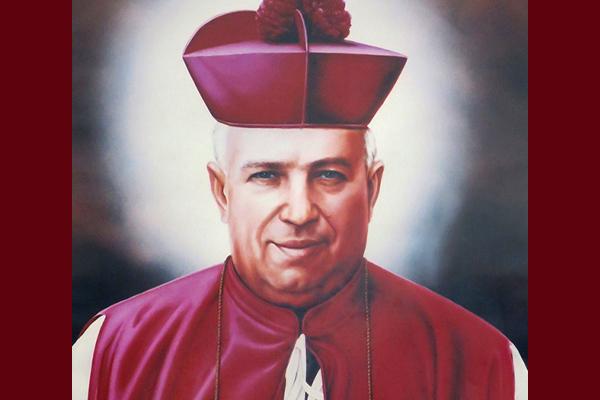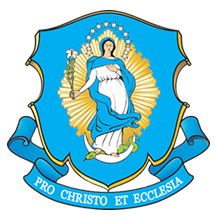
Bishop Rafael “was like the Good Shepherd,” said Pope St. John Paul II at his beatification in 1995. “Those who knew him said there was no power or obstacle which could weaken his evangelizing zeal.”
Welcome to "North American Sanctity," a series on holy men and women, boys and girls, saints and those on the road to sainthood, from Canada, the United States, and Mexico. Some will be familiar, others less so; but all are inspiring!
By Kimberly Bruce
The first Mexican bishop to be canonized, St. Rafael Guízar y Valencia (feast day: June 6) was known as the “Bishop of the Poor.” “I will give my life for the salvation of souls,” he often said. He spent 9 years in exile due to an anti-Catholic government; was a missionary; founded a newspaper; and cared for victims of the black plague in the early 20th century.
Bishop Rafael “was like the Good Shepherd,” said Pope St. John Paul II at his beatification in 1995. “Those who knew him said there was no power or obstacle which could weaken his evangelizing zeal.”
Zeal for the Eucharist and Mary
Born April 26, 1878, in Cotija, Michoacan, Mexico, Rafael was one of 11 children. His mother died when he was 9 years old.
Ordained a priest at 23, he spent many years as a missionary throughout Mexico. In 1905 he became spiritual director at the seminary in Zamora. His greatest joy, he said, was teaching his students about the Eucharist and Our Blessed Mother.
Father Rafael started a religious newspaper in 1911 but was put out of business by anti-clerical revolutionaries. He was often under surveillance, wearing disguises to reach the people and administer the Sacraments. He could look like a musician one day, a street vendor the next.
In 1915, when the Mexican authorities issued an order for him to be shot on sight, Fr. Rafael fled to the United States and remained there for several months. He next traveled to Guatemala as a missionary and then went on to Cuba. Known as a "doctor of homeopathic medicine" (one of his many disguises), it was in Cuba where Fr. Rafael cared for those stricken with the black plague in 1919.
Bishop of Veracruz
While still in Cuba, he was elected bishop of Veracruz, Mexico, and consecrated in the cathedral of Havana. Upon returning to Mexico in 1920, he spent his first two years visiting the regions of his diocese administering the Sacraments, preaching, and teaching.
He then set to work renovating a seminary in Xalapa that had been seized by the government. As soon as it was complete, however, it was seized again. He chose then to set up a clandestine seminary in Mexico City which successfully functioned for 15 years and was blessed with 300 seminarians.
At the start of the Cristero War in 1926, Bishop Rafael was forced to flee again as fierce persecution of the Church and Catholics began anew.
“An exemplary act of bravery came,” according to the Vatican’s biography of the saint, “when [Bishop Rafael] wanted to give himself up to his persecutors in return for the freedom of worship.” Dedicated to love of his sheep, he did not want to abandon the Church’s future priests nor neglect the spiritual and physical well-being of those entrusted to him as bishop.
Pure love
Truly, St. Rafael lived the “pure love” described by St. Faustina, who wrote:
Pure love is capable of great deeds, and it is not broken by difficulty or adversity. As it remains strong in the midst of great difficulties, so too it perseveres in the toilsome and drab life of each day. It knows that only one thing is needed to please God: to do even the smallest things out of great love — love, and always love.
Pure love never errs. Its light is strangely plentiful. It will not do anything that might displease God. It is ingenious at doing what is more pleasing to God, and no one will equal it. It is happy when it can empty itself and burn like a pure offering. The more it gives of itself, the happier it is. But also, no one can sense dangers from afar as can love; it knows how to unmask and also knows with whom it has to deal (Diary of Saint Maria Faustina Kowalska, 140).
His was “the path of holiness: the way of love, of divine charity, which ‘bears all things, believes all things, hopes all things, endures all things,’” said St. John Paul II. “The ‘new evangelization,’ to which I have called the Church on many occasions, and to which the Church in America is also committed, finds a model to follow in figures like Rafael Guízar Valencia.”
Bishop Valencia remained in exile until 1929 when the Cristero War finally ended, and he was able to return to Veracruz. Nine years later, he suffered a heart attack on Jun. 6, 1938, and died at the age of 60.
His incorrupt heart is on display today in the cathedral of Xalapa in his home diocese of Veracruz.
May we seek to model such a saint in his generosity of heart, his charity of putting others before himself, and his strength of character in bearing up under trials in defense of the Church and the Gospel.
Saint Raphael Guízar y Valencia, pray for us!
Next in the series: St. María Guadalupe García Zavala, June 24.
Previous article
{shopmercy-ad}
















